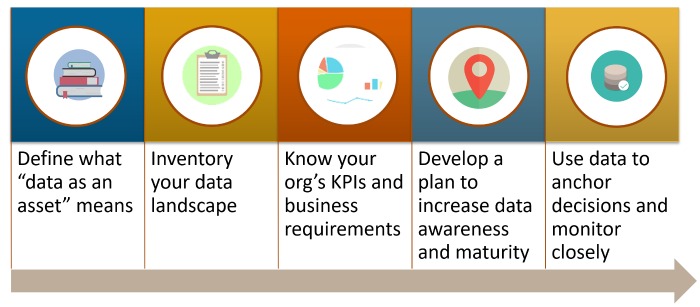Nearly 200 data management industry professionals dialed in to this month’s DATAVERISTY webinar, where Kelle O’Neal and John Ladley covered the importance of effective communications in analytics.
The one-hour educational program covered the topic from several angles — why it’s beneficial to share data insights to convey business outcomes and actions; the importance of data literacy; and tools and techniques you can use to get you (and who you’re communicating with) to think beyond the data.
Kelle and John started out the webinar by focusing on key barriers that complicate analytics communications; these include:
- Just pushing out information isn’t communicating
- Messaging requirements can vary by audience
- Effective communication is valued more in some areas and less so in others
- Data literacy is often inconsistent across organizations
Here, we recap highlights from the analytics communications webinar. To listen to the recording, visit the DATAVERSITY archive. You can download the presentation material on SlideShare.
Communication 101 Principles
Communicating analytics, just like communicating anything else, benefits from a thoughtful approach.
Before you communicate anything:
- Take time to plan out your efforts. Consider frequency — e.g., is this a one-time message, or does it need to be repeated? Is a formal communication plan needed?
- Consider your audience and customize as needed. What information is important to them? What should you not include?
- Determine the best medium/channel for your message. Leverage unique communication channels, not just email.
- Decide what supports your message. Is it research … case studies?
Then once you deliver the message, incorporate any feedback so you can make improvements the next time.
Data Literacy and Data-Driven Client Example
John talked about data literacy and the process a company goes through on the road to understanding data as an asset.
Kelle shared a First San Francisco Partners (FSFP) client example of how the company worked to align around a data-driven model using a five-part structure we’ve talked about before on this blog — Vision, Picture, Plan/Participation and Purpose. (Read Kelle’s 5-Step Process to Align a Data-Driven Organization article here.)

John Ladley covered this Road to Understanding Data as an Asset progression in our effective analytics communications webinar.
Data Visualization and Storytelling
Our webinar moved into the topics of data visualization and data storytelling. Kelle and John shared the benefits of data visualization and an example that showed the progression from raw data to turning it into a compelling, interactive visual. (For a deeper dive into the #dataviz topic, read our Keys to Effective Data Visualization webinar recap.)
Next, Kelle and John highlighted the power of data storytelling … because, since we’re wired to be drawn to stories, why not use storytelling for sharing analytics?
For a suggested story structure, John referenced the common story elements — conflict, stakes, characters and transformation — as a way to frame analytics and call emphasis to key findings.
Here’s how this structure could work for a business-related story:
- Conflict – the business problem
- Stakes – the risks to the business
- Characters – who/what is impacted or who/what is involved
- Transformation – future state when insights reveal business outcomes and opportunities

For a story structure, John Ladley suggested using the common story elements of conflict, stakes, characters and transformation as a way to frame and call emphasis to analytics findings.
Think Beyond the Data
Kelle and John ended the webinar by answering audience questions. They encouraged everyone to remember that analytics communication is more than just sharing data — it’s both art and science.
Effective analytics communication:
- Requires a plan and thoughtful approach
- Is meant to drive understanding and action
- Benefits from creativity and compelling visuals
- Is telling a story with the data
- Helps individuals and organizations think beyond the data
Up Next Month: Analytics Governance
Our DATAVERSITY webinar series continues Thursday, April 5 with the webinar, Advanced Analytics Governance: Effective Model Management and Stewardship. If you’d like to be notified of upcoming educational programs, like future Data Insights & Analytics programs and other FSFP news, get on the “insiders” list.


